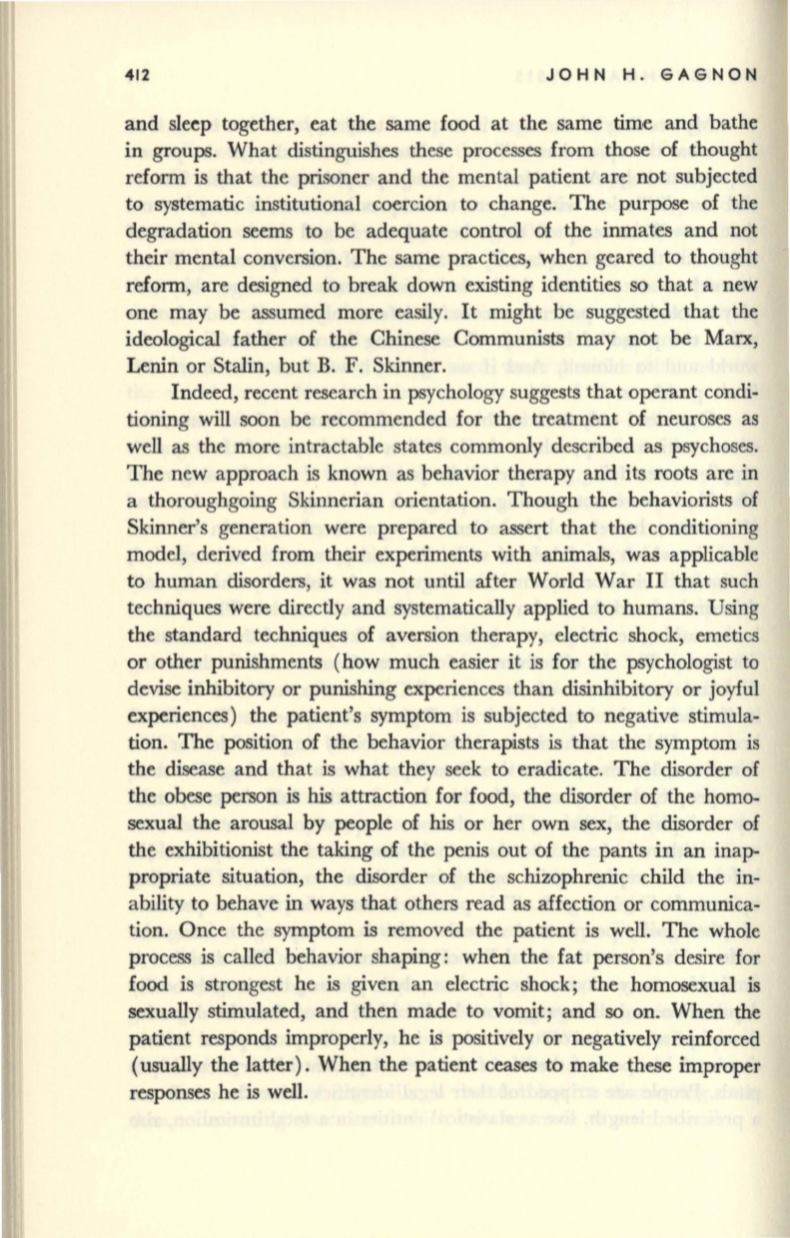
412
JOHN H. GAGNON
and sleep together, eat the same food at the same time and bathe
in groups. What distinguishes these processes from those of thought
reform is that the prisoner and the mental patient are not subjected
to systematic institutional coercion to change. The purpose of the
degradation seems to be adequate control of the inmates and not
their mental conversion. The same practices, when geared to thought
reform, are designed to break down existing identities so that a new
one may be assumed more easily. It might be suggested that the
ideological father of the Chinese Communists may not be Marx,
Lenin or Stalin, but
B.
F. Skinner.
Indeed, recent research in psychology suggests that operant condi–
tioning will soon be recommended for the treatment of neuroses as
well as the more intractable states commonly described as psychoses.
The new approach is known as behavior therapy and its roots are in
a thoroughgoing Skinnerian orientation. Though the behaviorists of
Skinner's generation were prepared to assert that the conditioning
model, derived from their experiments with animals, was applicable
to human disorders, it was not until after World War II that such
techniques were directly and systematically applied to humans. Using
the standard techniques of aversion therapy, electric shock, emetics
or other punishments (how much easier it is for the psychologist to
devise inhibitory or punishing experiences than disinhibitory or joyful
experiences) the patient's symptom is subjected to negative stimula–
tion. The position of the behavior therapists is that the symptom is
the disease and that is what they seek to eradicate. The disorder of
the obese person is
his
attraction for food, the disorder of the homo–
sexual the arousal by people of his or her own sex, the disorder of
the exhibitionist the taking of the penis out of the pants in an inap–
propriate situation, the disorder of the schizophrenic child the in–
ability to behave in ways that others read as affection or communica–
tion. Once the symptom is removed the patient is well. The whole
process is called behavior shaping: when the fat person's desire for
food is strongest he is given an electric shock; the homosexual is
sexually stimulated, and then made to vomit; and so on. When the
patient responds improperly, he is positively or negatively reinforced
(usually the latter). When the patient ceases to make these improper
responses he is well.


